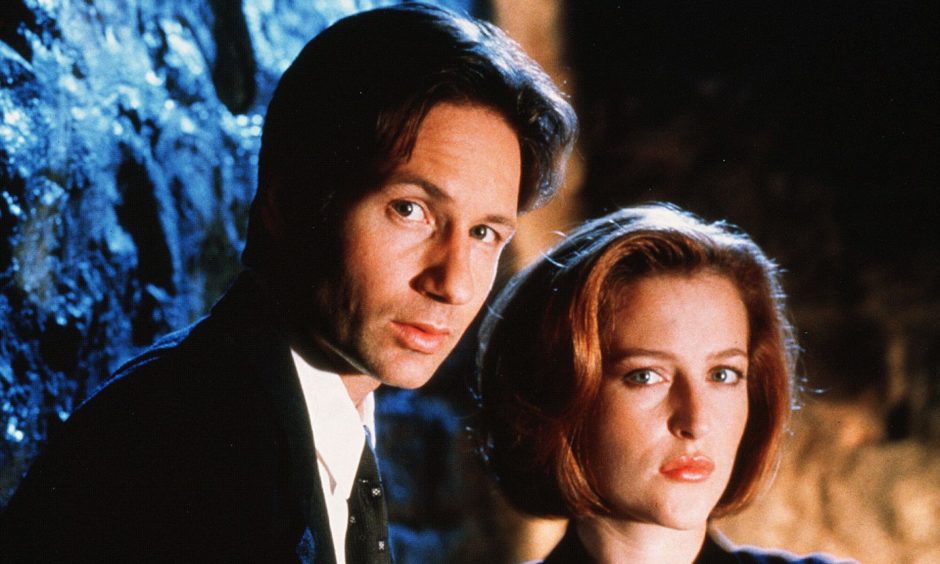
It was a TV programme which changed everything: a series launched on a small budget which soared into the stratosphere.
Not even the executives at the Fox network were wholly prepared for what transpired after they unveiled The X-Files to the world 30 years ago and sat by as it gradually turned into one of the great broadcasting success stories of the decade.
In the beginning, it didn’t have any grand ambitions and the show’s creator Chris Carter admitted that he wasn’t sure whether his idea would resonate with many viewers.
After all, he cast two almost unknown actors, David Duchovny and Gillian Anderson, as FBI agents in a show about aliens, ghosts, vampires, rogue computers, secret government experiments and science gone rogue without the money for special effects to compete with blockbuster cinema films covering many of the same themes.
If it had gone wrong, it could have been like Scooby Doo on steroids and only lasted a few weeks before being yanked unceremoniously from the schedules. Yet, once the pilot episode was released and phrases such as “The Truth is out There” and “I Want to Believe” were picked up by others, word spread from the minority into the mainstream.
And the will-they-won’t-they sexual chemistry between the believer Fox Mulder and the sceptic Dana Scully, as they investigated cases which the rest of the bureau ignored, only added to the mystique while The X-Files gained an international audience.
But that wasn’t the main reason why the series prospered. Nor even the fact that Carter managed to unearth and encourage a team of young writers with an exceptional work ethic and vivid imaginations which was obvious from how their careers progressed after they moved on from the paranormal into other areas.
These writers created magic
In the first two series alone, the programme benefited from the involvement of Howard Gordon and Alex Gansa, who subsequently progressed to the likes of Homeland and 24; Vince Gilligan, who brought us Walter White in Breaking Bad and Better Call Saul; and James Wong and Glen Morgan, who established the Final Destination film franchise.
And then, of course, there was Mulder, who stubbornly chose to ignore the gibes of his colleagues who branded him “spooky”, even as he and Scully uncovered a vast conspiracy of a government within a government aiming to control the population.
Duchovny spoke and sounded like a true son of Uncle Sam, but he’s actually proud of his north-east Scottish roots. His mother, after all, was a gritty-as-granite Aberdonian, Meg Miller, whose family originally came from the coastal village of Whitehills, but who grew up in the city and graduated from Aberdeen University in 1952.
The actor, who was born in New York in 1960, has been proud to talk about his background and how he was influenced both by Meg and his late father, Amram, a noted Yiddish writer and journalist.
On one of his early visits to Scotland, for the Royal premiere of the comedy Return to Me, in 2000, Duchovny sported a kilt in the family’s MacFarlane tartan and the occasion was attended by the journalist Jack Webster, a proud “loon of Maud”.
And it was obvious that he struck up a connection with both David and Meg.
As Jack recalled: “We are a clannish lot in the north-east, so there was much to talk about in our common background. She told me how her son was nearly 30 before his thoughts turned to acting, after being an academic figure at both Yale and Princeton.
“When Meg emigrated to the United States, she drummed into her son the value of hard work and of making friends on the way up the ladder because you never knew when you might meet them heading in the opposite direction.”
David reciprocated that view, but admitted The X-Files arrived out of the blue and that, when he read the initial scripts, he had no notion of how they would strike such an enduring chord that the series ran for more than 200 episodes and spawned two feature films, as the prelude to returning for an encore in 2016.
He said: “If you had asked me what my life would have been like when I was 20, I would have told you that I could envisage myself writing in some form. Acting just kind of happened for me. Whenever you have a huge success like The X-Files, it is a happy accident. But, at that point, I committed to acting as I have done for the last 25 years.”
Lightning doesn’t strike often in Tinseltown, but everything came together in Carter’s world; the much-imitated theme music by Mark Snow, and the introduction of such unforgettable characters as the Cigarette Smoking Man, played with unspeakable malevolence by William B Davis (a former drama teacher at Dundee Rep) and Mulder and Scully’s harassed boss, Walter Skinner, brought to life by Mitch Pileggi.
Yet, while the plots were often wonderfully constructed and tapped into the very real fears of those watching about such issues as Big Pharma’s exploitation of the environment, The X-Files was always about more than little green men and spaceships.
Indeed, as Carter said at the outset: “The idea of science versus faith – or the paranormal or the supernatural – was fascinating to me in general. When I read that there were scientific studies being done about aliens and the existence of extra-terrestrials, I thought it was a really interesting opportunity to use that as a central theme for a television show.
“It was a sort of stab in the dark, because when a new show is starting, you try and find the best writers possible and hope they develop a connection to the material. I was fortunate in hiring just the right people at just the right time.”
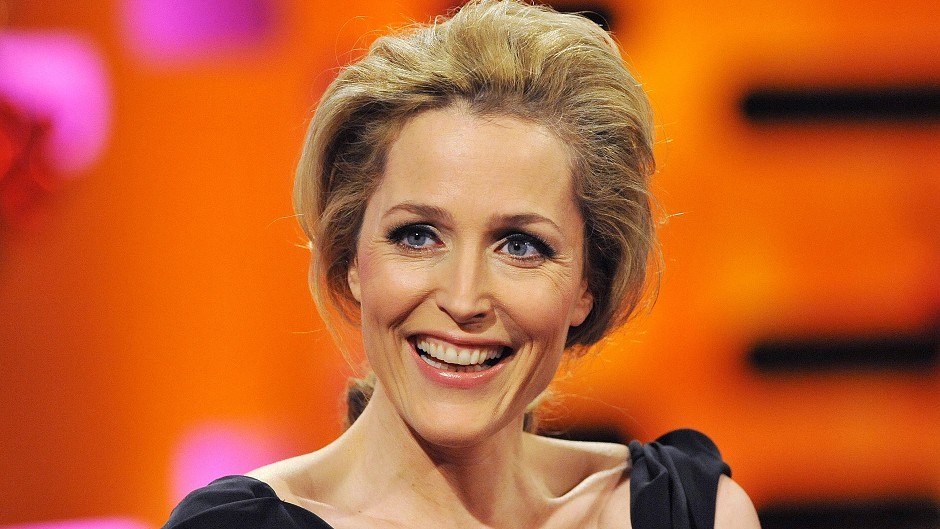
As he appreciated, the response from many viewers demonstrated that the paranormal was no longer considered off limits. On the contrary, it was becoming a fertile ground for research into all kinds of different subjects, ranging from deja vu to telepathy, mysterious events in nature, lost villages in history, unexplained phenomena from the pages of old religious chronicles… a veritable cornucopia for all those who sometimes walk into a building for the first time and sense they’ve been there before.
Dr Rachael Ironside, an associate professor at Robert Gordon University, has a keen interest in the paranormal and explained why it exerts such a compelling grip even on those who would normally regard themselves as being grounded individuals.
And, as she pointed out, there are plenty of incidents from north-east lore and legend which would have lent themselves perfectly to analysis from Mulder and Scully.
Rachael said: “The X-Files, and other supernaturally-themed TV programmes, have demonstrated their ability to capture our imagination in a very enduring way.
“This is perhaps unsurprising when you consider that stories related to the supernatural have featured in our culture and folklore throughout history.
“In part, this may be because many of us still hold some sort of belief in the supernatural, can recall a strange experience that we have had or it may also be because they make great stories that tell us something about our known, and unknown, world.
Culbin is a perfect X-File
“The north-east, like much of the country, has some great supernatural folklore. As part of Scotland’s Year of Stories in 2022, we gathered stories about Culbin, the disappeared village [which was devastated by a sandstorm in Moray in 1694].
“It is a fascinating historic event in the region with very real environmental causes, but several folkloric explanations emerged from this as well. My favourite is the story of the Kinnaird of Culbin who made a pact with the Devil to play cards and it is said that they continue to play under the sands to this day.
“Another enduring story is that of the Big Grey Man of Ben MacDhui [the second highest mountain in Britain]. For me, this story is so interesting because of the array of paranormal explanations the Big Grey Man has acquired over the years.
“For some, he is a spectre, others regard him as a spiritual being, and for some he may be the equivalent of Scotland’s Bigfoot. For the sceptics, however, he is simply an illusion caused by the ‘Brocken Spectre’ phenomenon.”
It looks as if Shakespeare was right – there are more things in heaven and earth than can be comfortably, complacently explained away.
But where does Rachael see herself in the bigger picture? As believer or sceptic?
She replied: “The supernatural often gets divided into a believer versus sceptic narrative. We see this regularly in the media and in The X-Files.
“In the recent podcast series, Uncanny, Team Sceptic are pitted against Team Believer. However, in reality, the lines are much more blurred. Research has shown supernatural belief is complex and one person may believe in ghosts, but not in UFOs.
“Someone may have an experience and still be sceptical, whereas another may have had no experience and believe. For others, they may be comfortable sitting on the fence.
“As an academic researching supernatural folklore and experience, I believe a healthy dose of scepticism is important. However, I also feel that these extraordinary experiences and stories form a very normal part of our human experience and, because of this, we should be open to exploring what this means.”
Nobody who tuned into the first series of the X-Files in 1993 will ever forget the experience. It was something new, something where the production crew, the actors and the writers were literally concocting a brew in a frenzy of creativity which chilled the blood and piqued the little grey cells at the same time.
Ultimately, although it is now 30 years since that hypnotic theme pitted us into another mystery, there will never be any shortage of viewers who want to believe.
And, of course, the truth is still out there, as elusive as it has ever been.
FIVE CURIOUS THINGS ABOUT THE X-FILES….
- David Duchovny joked about his family roots, saying: “I am half Scottish and half Jewish; it’s hard for me to buy anything!”
- In the third series, Mulder and Scully talk about the Loch Ness Monster while looking for a similar creature in the episode Quagmire.
- The series spawned a spin-off called The Lone Gunmen, whose first episode revolved around a plot to fly a commercial airliner into the World Trade Center in New York. It was broadcast seven months before 9/11.
- Billy Connolly made a notable appearances in the second X-Files feature film I Want to Believe. No spoilers, but he wasn’t in joking mode.
- Chris Carter said he based Scully’s character on Clarice Starling, the FBI agent played by Jodie Foster in The Silence of the Lambs.
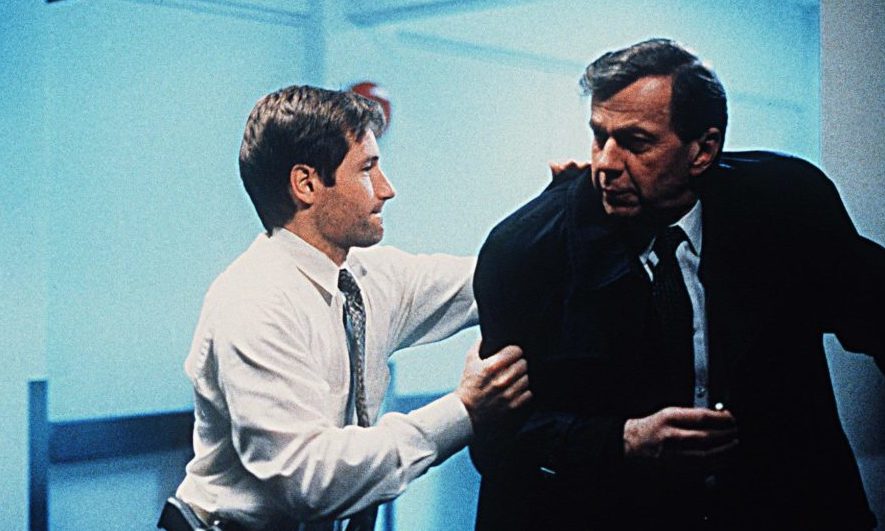
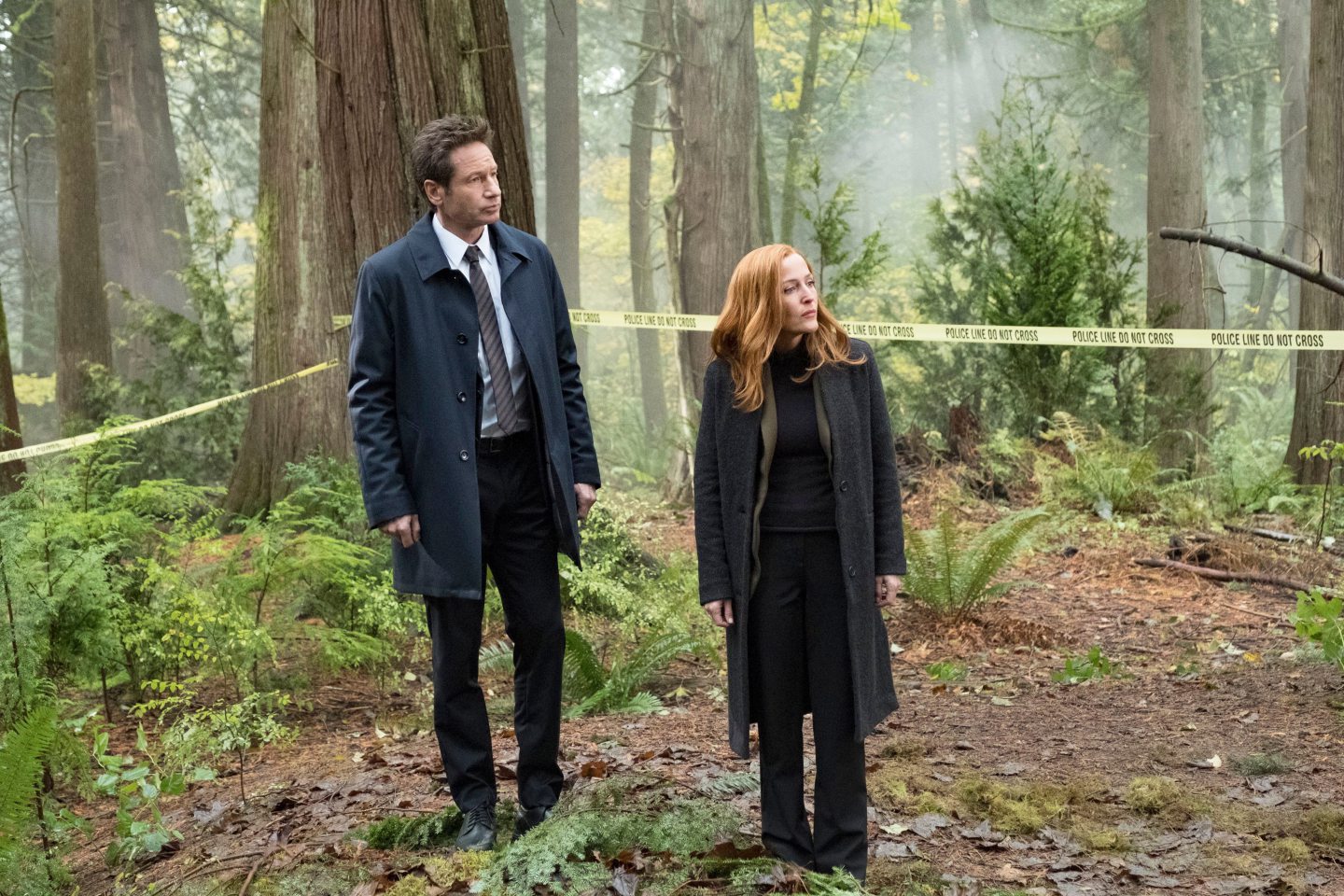
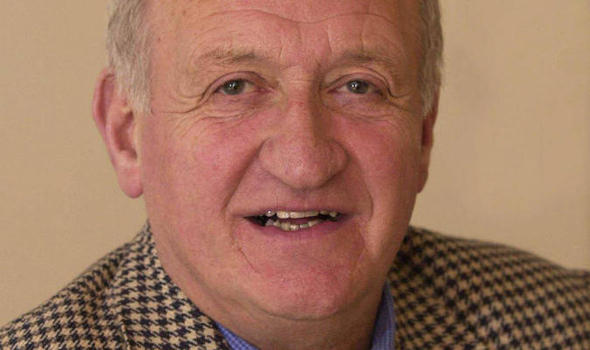
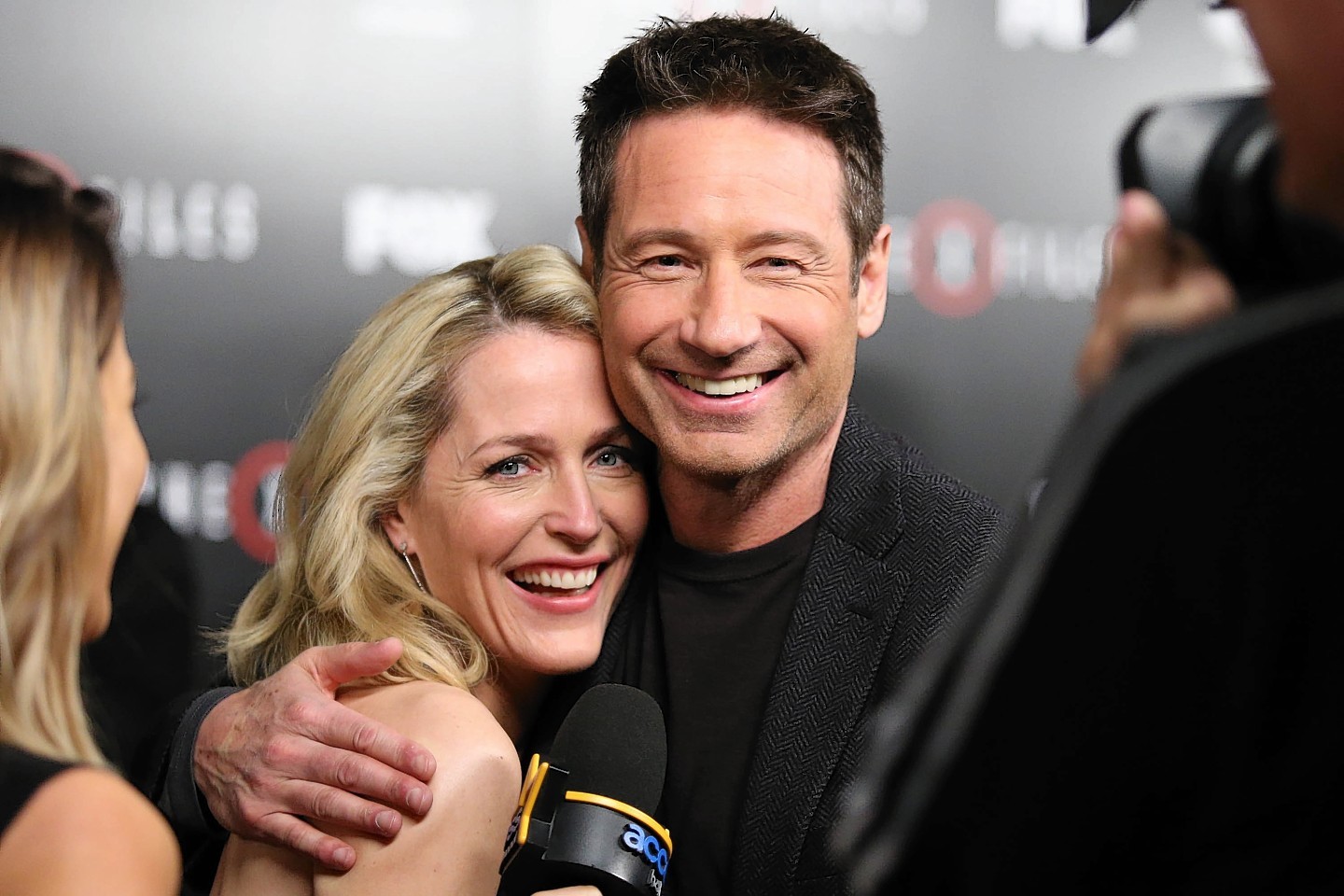

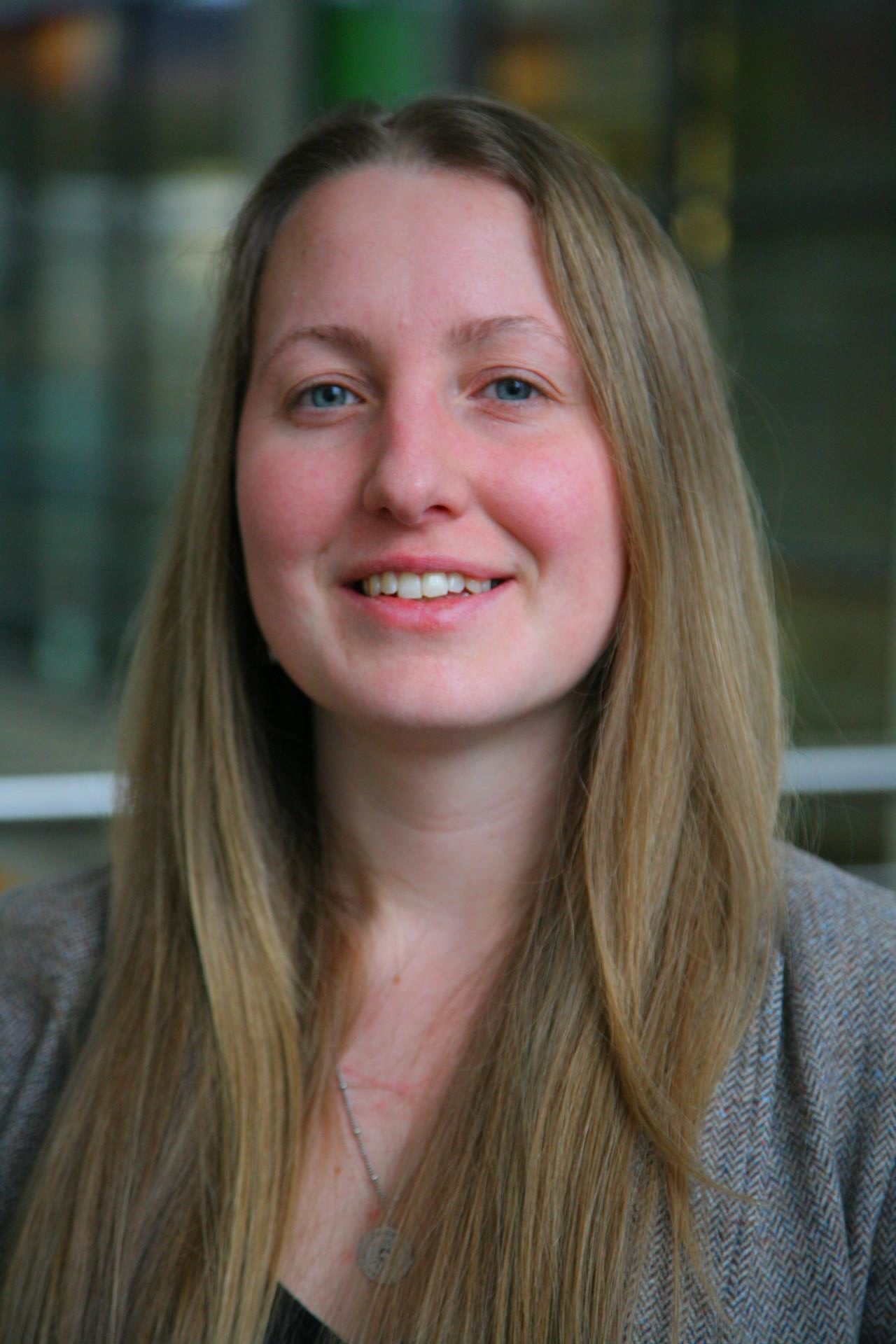
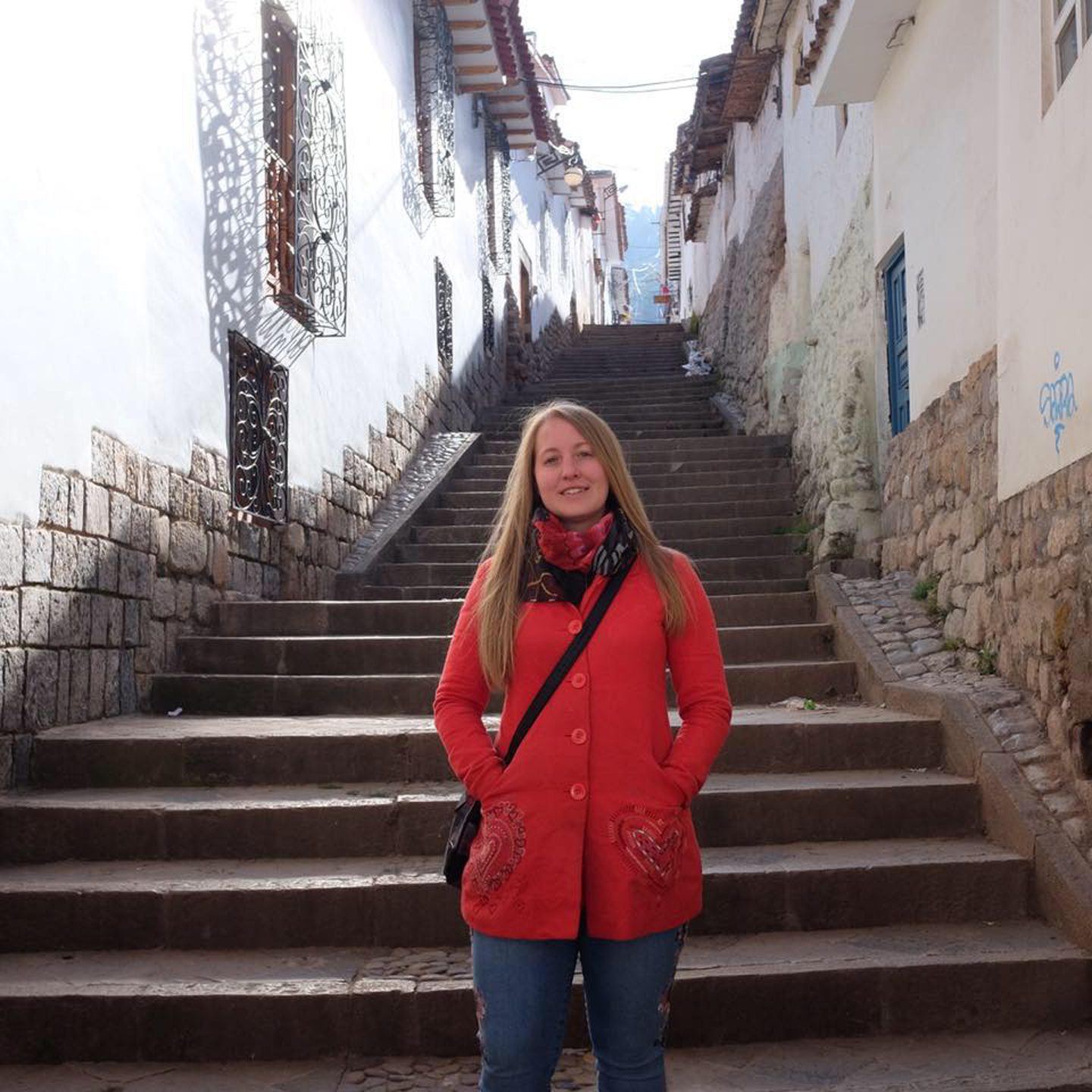
Conversation